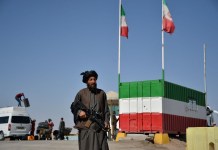Is the Kashmir and Khalistan ideology different sides of the same coin? As of late, Kashmir has been witnessing encounters nearly every day with countless lives, that of militants, civilians and security forces, being lost. The desire to remove Indian forces from Kashmir amongst the ordinary people remains undiminished despite realizing that the ambition is nearly unachievable.
Why Kashmiri Pandits Want a Separate Homeland Far-Away From Muslims?
There are Khalistan aspirants, once again, making a come back in the news media. In this article, the EurAsian Times explores the ideologies of the separatist insurgencies of India, mainly Kashmir and Khalistan and how the Khalistan movement has accepted India as the homeland and Kashmir hasn’t.
Noted Similarities – Kashmir and Khalistan
The Khalistan and Kashmir movement have shared many similarities such as both were premised upon ethno-religious claims of difference and injustice with a substantial historical pedigree.
Various research papers highlight that Kashmiris were self-governing during the Kashmiri Sultanate (1346 – 1586) and part of the Mughal empire. There were Afghan and Sikh empires before being ruled by the Dogra dynasty following the Treaty of Amritsar in 1846.
The development of a distinctive Kashmiri identity was fueled by the region’s status as a distant outpost that was geographically isolated from the Dogra court. Now, while the Sikhs of Punjab shared a similar provenance to Kashmiris, they have been more closely integrated with mainstream Indian society.
Are India-Canada Relations Turning Frosty Over Khalistan Movement?
And this is owed to geography – Punjab being an extension of the Gangetic plains whilst Kashmir being isolated by often-impassable mountain ranges. Then there is the sociological linkage, Sikhism originated in India, ethnic and sociological linkages remain with the mainstream Indian society; whereas Kashmiris are closer to Turks and Persians. It cannot be denied that their cultural, religious and social practices are that of Central Asian (Persian) origin.
According to secondary research by EurAsian Times and a paper released by the Petroleum Institute, “Kashmiri society was controlled by a minority Hindu administrative class of Pandits, while the minority status of Sikhs against the numerically much larger, religiously-defined Hindu population served a similarly unifying function.”
Another similarity which cannot be overlooked is the 1921 Montagu-Chelmsford reforms which created separate electorates for the Sikhs in the Punjab legislature, this was mirrored in Jammu and Kashmir where agitation resulted in political reforms spearheaded by various religious societies.
Other similarities can be seen in their faiths which have a strong tradition of martyrdom and mixing of religion and politics that sits ill at ease with Indian secular nationalism. There is the much misunderstood Islamic concept of Jihad and the Sikh concept of miri-piri that joins the temporal and spiritual realms to sanction religiously-regulated political action.
Al-Jazeera Criticises NYT Editorial on Kashmir Dispute, Kashmiri Pandits Ask Counter Questions
Moreover, politics in both states were cynically manipulated by the centre under the leadership of Congress (I) Prime Minister Indira Gandhi who, fearful of being seen as soft on minority interests, attempted to buttress her credentials in India’s Hindu heartland by appearing tough on Sikh and Kashmiri separatism.
This reinforced anti-India sentiment and encouraged political fractions to adopt progressively more radical positions to distant themselves from the central government and assume the mantle of protector of Sikh and Kashmiri identity.
Differences Between Kashmir and Khalistan
The most obvious difference is that Kashmir’s political status was a contentious issue from the time of partition, whereas that of Punjab despite a long tradition of anti-centre political activism, only became so after independence, when the Punjab state finally came into being, it gave birth to new states Haryana and some parts merged into Himachal Pradesh. In a deep contrast, J&K’s borders have remained static since 1947, with approximately 65% Muslim Population in Jammu and Kashmir, according to secondary data analysed by EurAsian Times.
India Using Israel’s “Palestine Strategy” To Crush Rebellion in Kashmir?
Present-Day Scenario
While the Khalistan movement is virtually no more, the Kashmir cause continues. Over the years government measures such as depriving the insurgents of local support, amnesties increased investment and a public willingness to negotiate and make concessions reduced separatism’s rhetorical appeal, marginalized hardliners and contributed to the dramatic reduction in violence.
But this year, there have been spikes in violence. Separatist politics and independence from Indian rule remain emotional issues for Kashmiri Muslims. In a heavy contrast, the restoration of law and order in Punjab has seen the campaign for Khalistan effectively relegated to the past as a misguided episode in Sikh history. However, Kashmir continues to be a burning, unresolved issue.
Expressed By A Foreign Journalist in Kashmir
More at EurAsian Times
- Why is “Beef Politics” Not Working in Kashmir, North-East & South India?
- The attack on Amarnath Yatra Justifies the Fear of Kashmiri Pandits
- Pakistani BAT Commandos Bleeding Indian Border Security Forces
- What Can Kashmiri Pandits Learn from Jews and Parsis?




